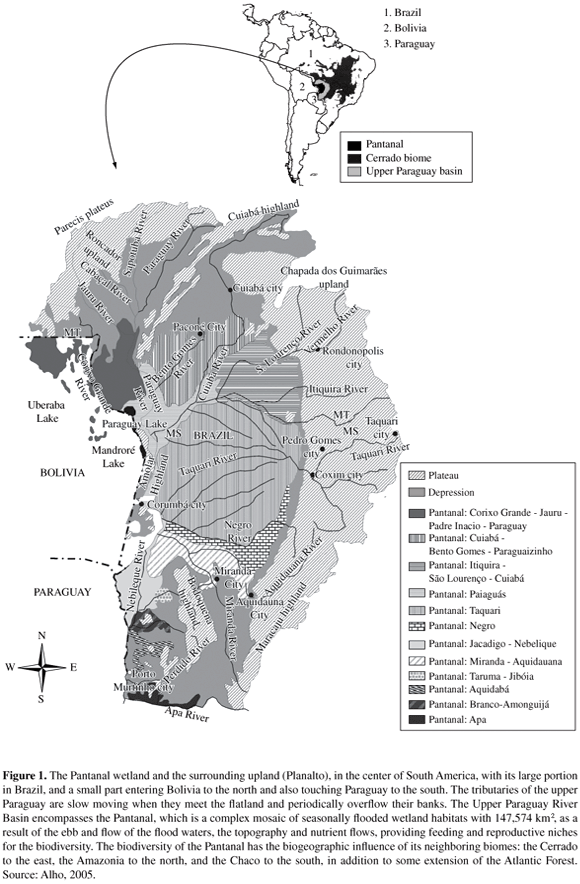Seasonal flooding is the most important ecological phenomenon in the Pantanal. Every year many parts of the biome change from terrestrial into aquatic habitats and vice-versa. The degree of inundation creates a range of major habitats. Flooding occupies about 80% of the whole Pantanal. In contrast, during the dry season, most of the flooded areas stay dry, when the water returns to the river beds or evaporates. The Pantanal is a large continental savanna wetland (147,574 km² in Brazil), touching Bolivia to the north and Paraguay to the south. The maze of fluctuating water levels, nutrients, and biota forms a dynamic ecosystem. The vegetation comprises 1,863 phanerogam plant species listed for the floodplain and 3,400 for the whole basin and 250 species of aquatic plants. The complex vegetation cover and seasonal productivity support a diverse and abundant fauna within the floodplain: 263 species of fish, 41 of amphibians, 113 of reptiles (177 for the basin), 463 of birds and 132 mammal species. Many endangered species occur, including jaguar (Panthera onca Linnaeus, 1758). Waterfowl are exceptionally abundant during the dry season. Analysis of the root causes of the threats to biodiversity indicated that deforestation (17% of the Pantanal and 63% of the surrounding uplands) with modification and loss of natural habitats due to cattle ranching, unsustainable agriculture, mining, environmental contamination (including mercury, pesticides, urban sewage), non organized tourism, fire, disturbances at the upstream region modifying hydrological flow, erosion, weak implementation and enforcement of legislation are the major issues to face conservation action and sustainable use. Under an evolutionary focus, local biodiversity seems to be well adapted to seasonal shrinking and expansion of natural habitats due to flooding. However, the conversion of natural vegetation due to human occupation is a real threat to biodiversity.
biodiversity; conservation; fauna; flora; Pantanal

